Araucaria is a small tree with elegant branches and leaf-needles, bright green in color and unusual shape. In the natural environment there are more than 20 species of this family, most of which are huge trees, but there are cultivated varieties. Araucaria grows up to 2 meters in height with proper care and is suitable for decorating the interior at home.
Such a spruce is a perennial plant that loves fresh air, moderate watering and high humidity. It has a high resistance to attacks by various pests and is not subject to typical indoor flower diseases, but it is demanding on the feeding and transplantation regime, and also does not tolerate dry air and the wrong place to grow.
Content
Characterization of the species and varieties of indoor araucaria
Indoor Araucaria is a representative of the Araucaria family, one of the few decorative conifers that can fully develop at home. The natural habitable environment is forests of South America, Australia and New Guinea, where you can meet different varieties of evergreen spruce, the height of adult trees reaches 50-60 meters. In indoor conditions, this species reaches up to 2 meters and has more than a dozen varieties common in different parts of the world. The most popular varieties with photos:
- Colloidal is named so because of the appearance of its cones and the shape that the crown of the tree forms;
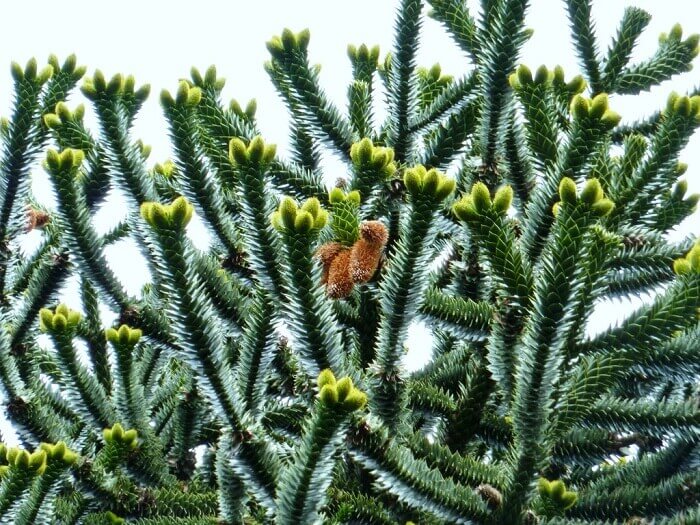
Columnar - Variegated has a special shape of foliage, tapering gradually, from above it looks like a pyramid;
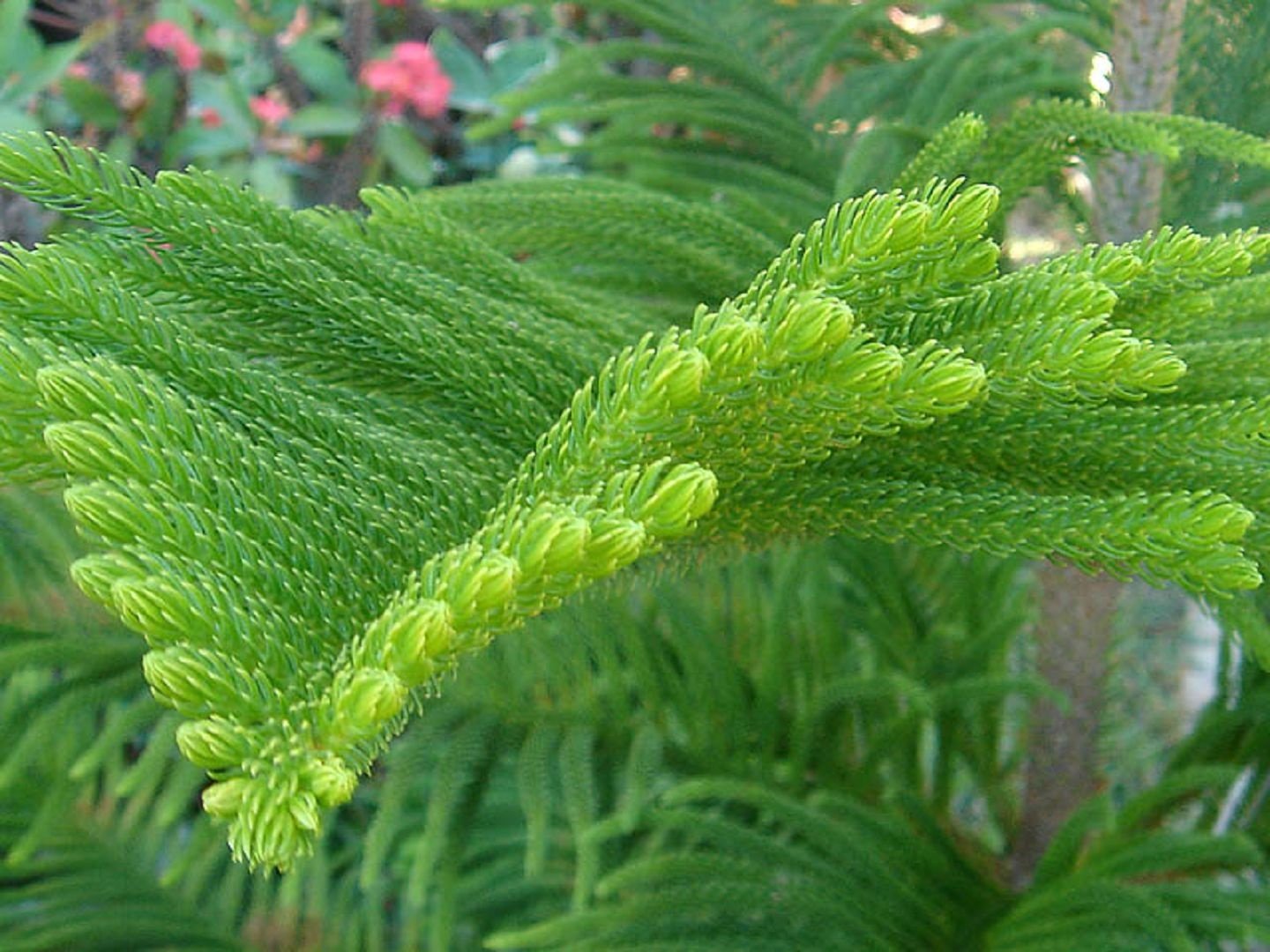
Leafy - Chilean has spiky spiral leaves of a dark green hue;
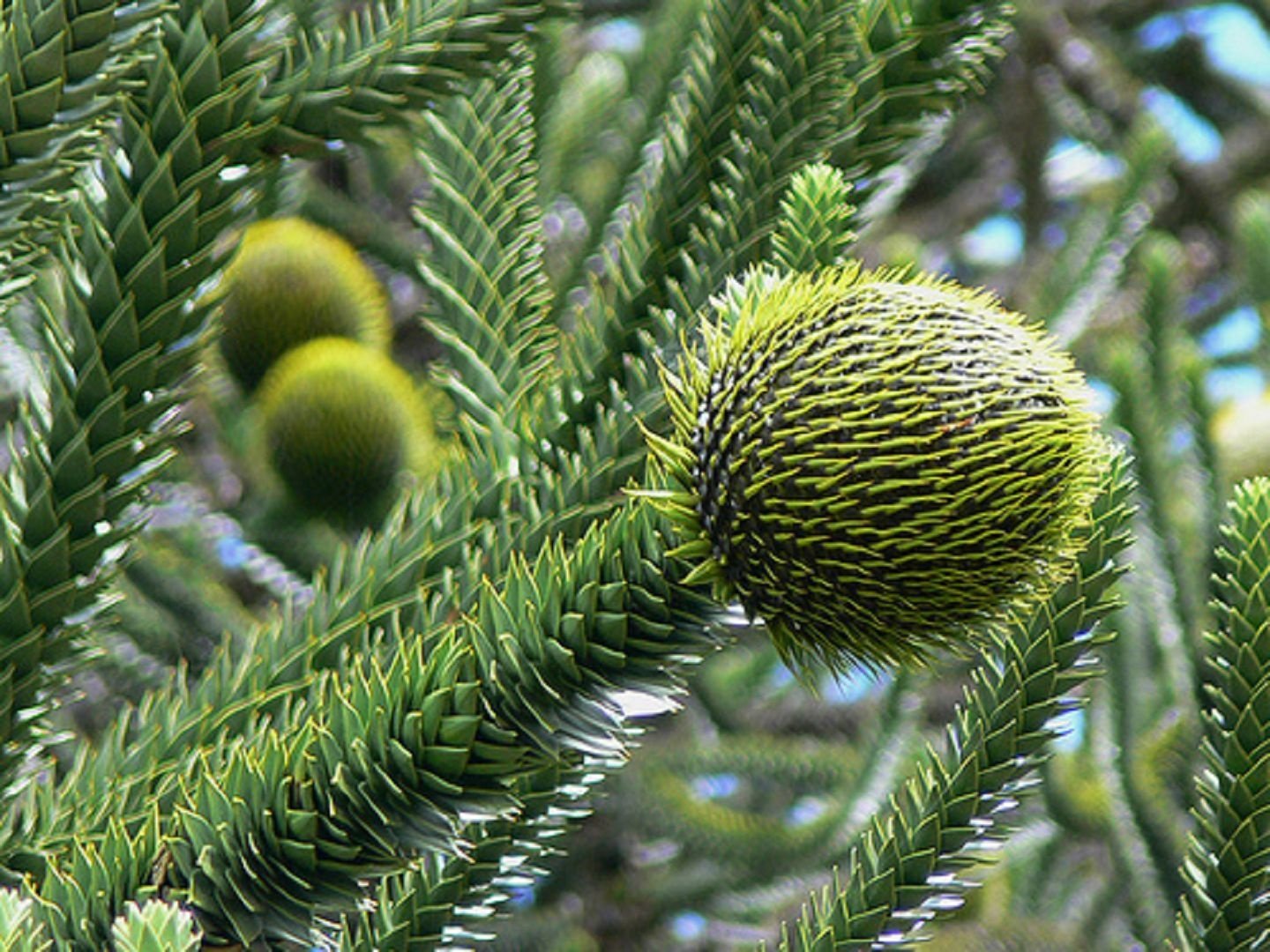
Chilean - Bidville's araucaria has a glossy foliage, arranged in two rows and a specific construction of the crown from the branches, as well as a huge cone size.
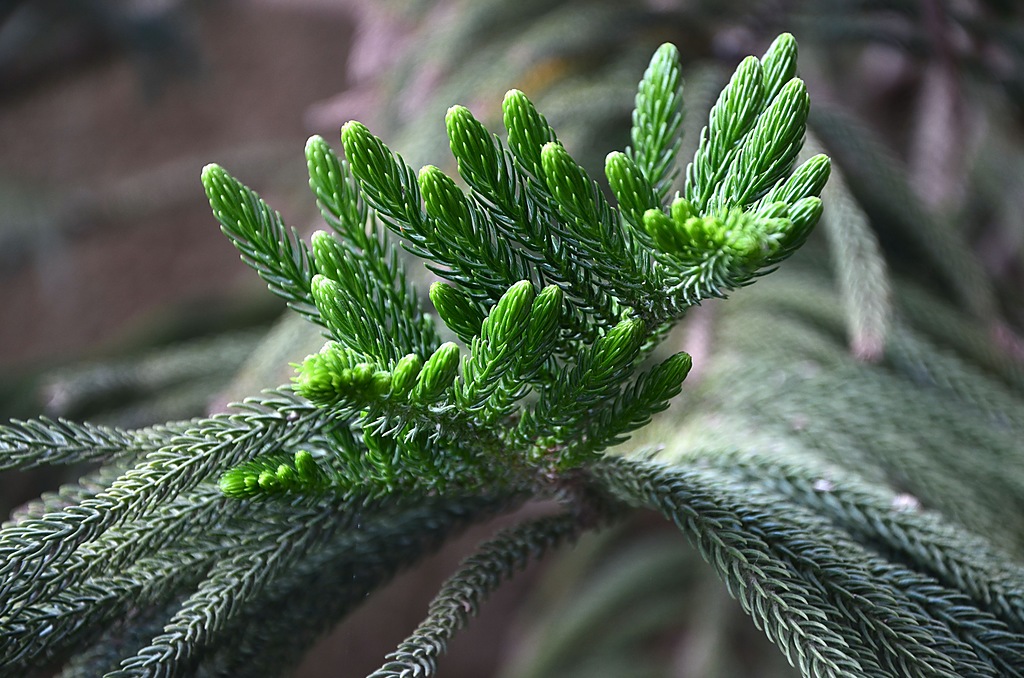
Bidville
The evergreen tree has a number of characteristic features:
- soft leaves bent upward and arranged in a spiral;
- light green color;
- narrow foliage resembles conifer needles in shape;
- close arrangement of leaves to each other;
- slow growth indoors;
- the branches form a triangular crown;
- bark of dark brown color, slightly peeling;
- the presence of cone fruits;
- branches are covered with small scales.
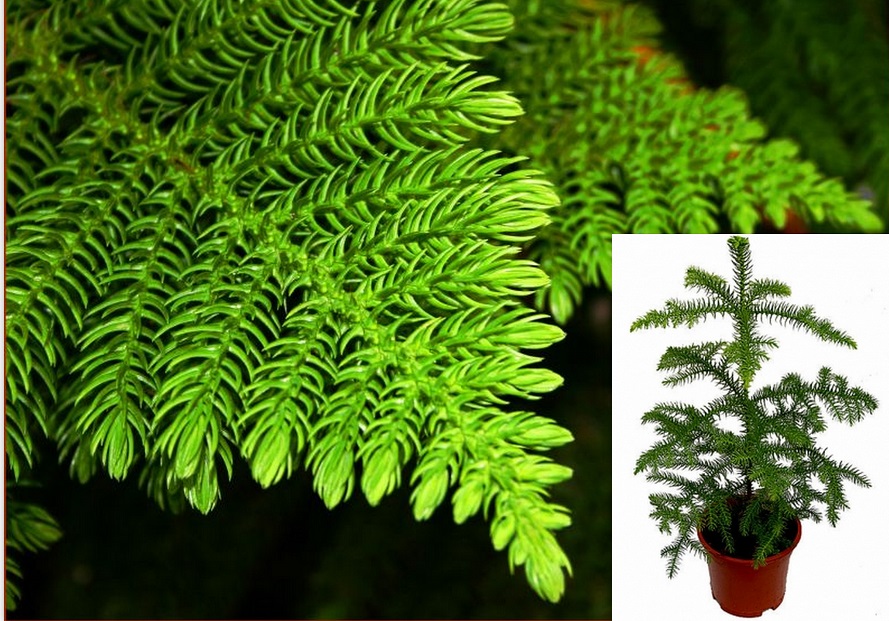
Decorative spruce also has useful properties:
- purification of air from toxins;
- humidity control in the room;
- strengthening the energy of creative people and helping to unlock their potential.
With proper care, the tree pleases with its green appearance for many years and makes it possible to plant it at home.
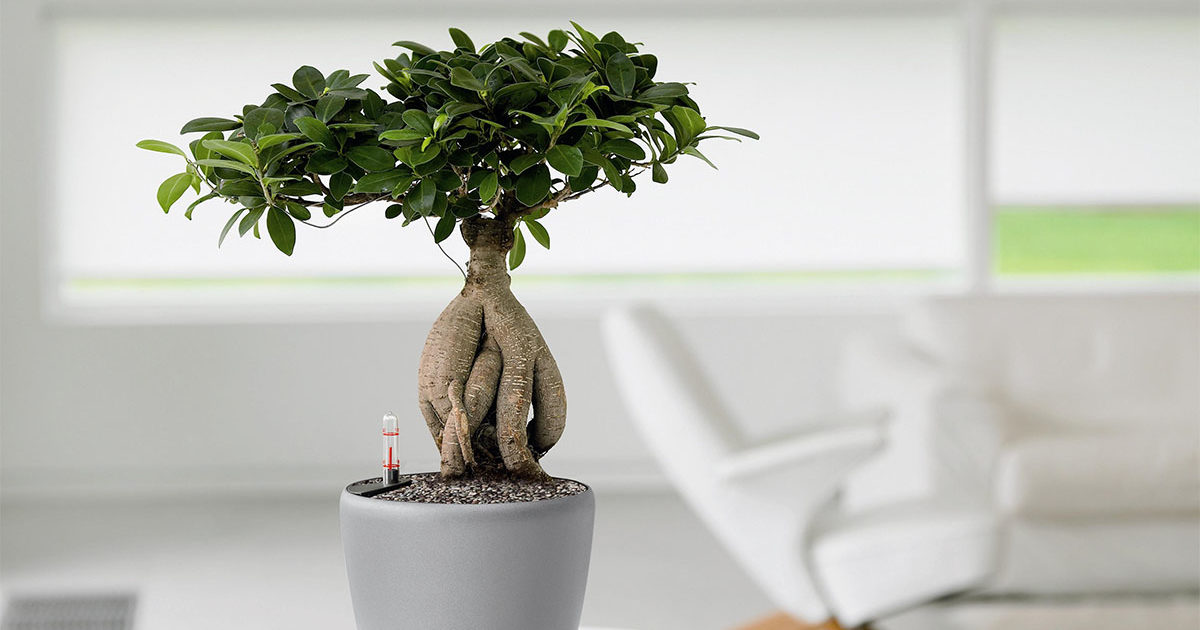 You may be interested in:
You may be interested in:Secrets and difficulties of caring for araucaria at home
This indoor green is not very demanding on the conditions of growth and care, but still loves systematic and moderate in watering, moisturizing, lighting.When the basic rules of care are followed, the araucaria will live in your house for up to 10 years, gradually growing up and decorating any room with its exotic look.
Lighting
Araucaria feels best when there is a large amount of scattered light, or in the shade when exposed to direct sunlight. For uniform growth of the shelter, the tree needs to be rotated weekly along the axis, directing to the sun.
Temperature and humidity
This species prefers coolness, and the optimum temperature for it is no higher than +22 in the summer and +15 in the winter. Never put araucaria near heating appliances, warm air will deprive it of vitality.
Being a native of the tropics, the plant needs to be sprayed, with a lack of moisture, the needles begin to turn yellow and quickly fall off. To avoid this, you should use the shower for the tree several times a week in the summer, less often in the winter months, but still do not forget to moisten the foliage.
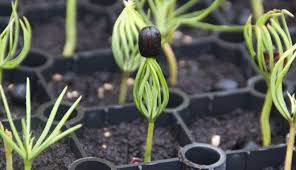 You may be interested in:
You may be interested in:Watering and feeding
Araucaria should be watered depending on the time of year, plentiful moisture is appropriate in the summer, while it is worth paying attention that the water does not stagnate in the pot. In winter, watering is reduced and you need to focus on drying the soil. After all the moisture has gone, you need to wait 2-3 days and only then resume watering the plant.
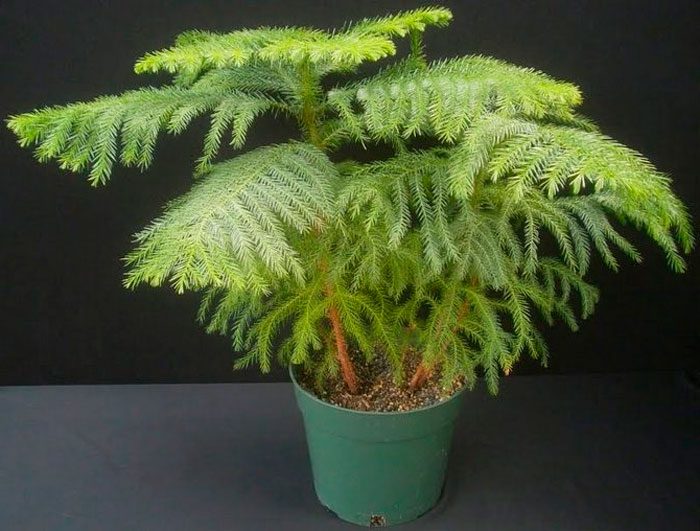
It is appropriate to feed araucaria twice a month during the period of active growth and reduce the process of fertilizing for the winter, enough 1 time. Make sure that the mineral fertilizer used does not contain calcium or its amount is minimal, as it harms the tree and slows its growth.
Planting, transplanting and reproduction of araucaria
For planting araucaria should use a special substrate intended for conifers. With independent preparation of the soil, its composition should include such components as peat, sand, sheet and turf soil. A prerequisite for a successful landing is to fill a third of the pot with drainage.
You can grow araucaria on your own from seeds or using the upper cuttings of adult plants. The process of seed descent is not always successful, but a simple algorithm of actions is suitable for propagation by cuttings:
- Cut one of the upper cuttings of the tree and put it in a cool place for a day.
- To clear a section of a shank of resin and to process it with charcoal.
- Plant such a sprout in the sand mixed with peat and cover from above with a transparent glass container.
- Choose a bright and warm place for the pot.
Provided that the air temperature is within +25, the root formation process will end in 2 months, and when new needles appear, a young plant can be transplanted into a substrate, where it will further develop.
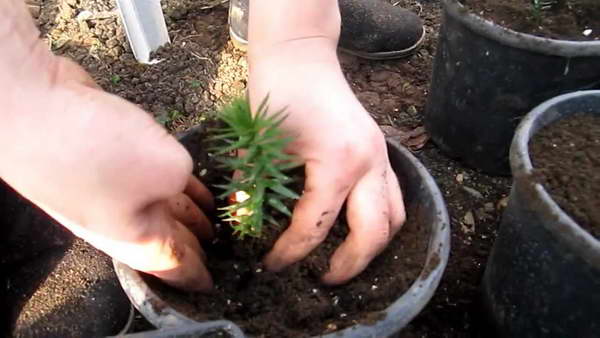
Annual transplantation is inappropriate for the species in question, it is enough to transplant a tree every few years, while to restrain growth, choose a pot of about the same size as it was, and update the soil composition and clean the root system.For transplantation, a method of transshipment into a new pot, previously well-moistened plant, is well suited.
Why do branches dry in araucaria and what to do
The main sign of improper tree care is the condition of its crown and twigs. If they turn yellow and dry, the plant was attacked by pests or became ill.
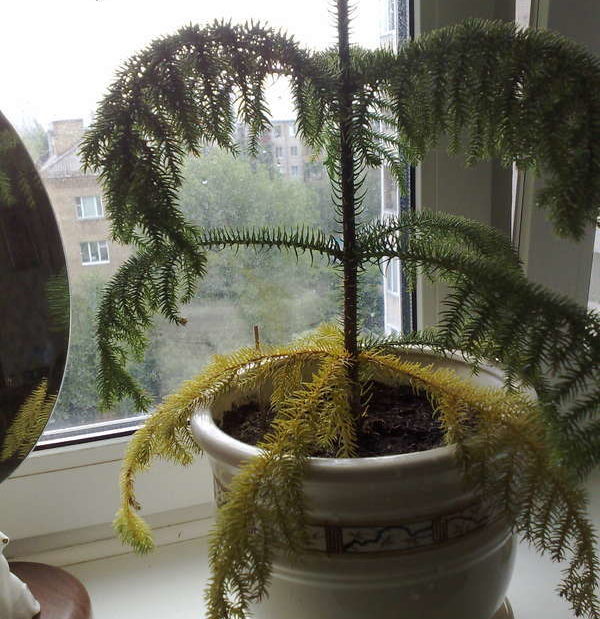
Pests and control methods
Compared to other ornamental foliage, araucaria is very rarely attacked by insects that can damage it, but such cases do occur. Possible damage to the tree by such pests:
- Mealybug - a sign of its appearance will be white lumps on tree branches. In order to destroy the pest, you can use spraying with a solution of alcohol, laundry soap with water, and at least three times treat the tree with special poisons with an interval of 10 days.
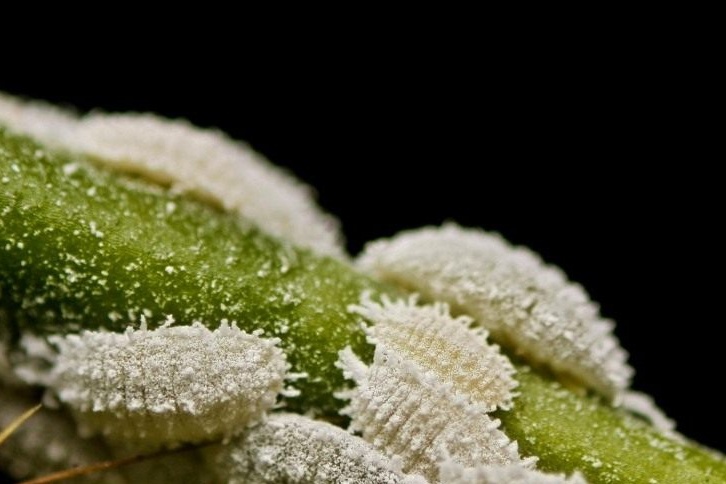
Mealybug - Root beetle - dried lower spruce branches testify to its appearance. In order to get rid of the pest, you need to treat the soil with an insecticide solution.
- Aphid appears on the crown of a tree in the form of pineal growths, which grow quite quickly and the plant dries. Insecticides, for example Mospilan, Calypso, are well suited for disposal.
- Speckled moth leads to the death of the tops of the cuttings, and the plant acquires a brown color of twigs. It is necessary to double-treat the tree with special agents containing pyrethroids, the interval between such measures is 7-8 days.
- Pine loach can be seen by the anomalous curvature of the shoots and the drying of young twigs. Be sure to remove the affected parts of the spruce and treat with special chemicals.
When a pest is recognized at an early stage of its development on spruce, the process of extermination is much simpler, and the appearance of greenery eventually quickly returns to normal.
Disease and treatment
Improper plant care can lead to the development of diseases. For araucaria, the following types of diseases are characteristic:
- drying and yellowing of the shoots is associated with a lack of moisture, a flower should be bathed more often;
- curvature of the barrel indicates improper lighting. You should change the place of growth of the tree or turn it over more often;
- growth retardation occurs with an excess of potassium.
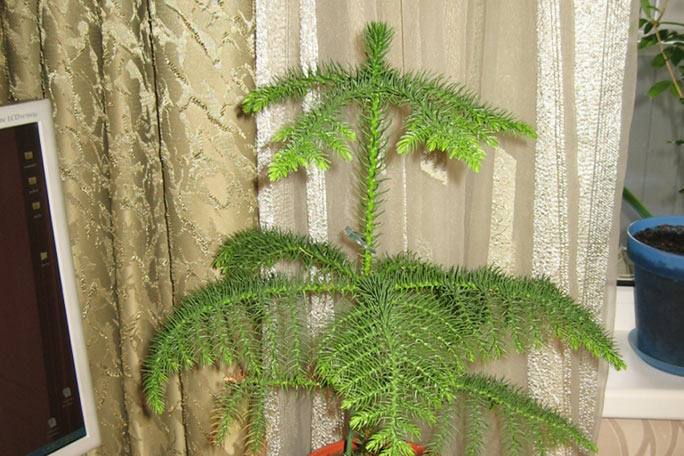
It is not recommended to use hard water and you need to check the composition of top dressing. - drooping branches indicate an excess of moisture. The amount of water used should be reduced when moistening the soil;
- thin and sluggish young shoots indicate that greens lack nutrients. It is necessary to increase the amount of fertilizing or change the fertilizer to a better one.
Indoor spruce has a high resistance to various diseases of ornamental foliage, but still improperly organized care can harm the plant.
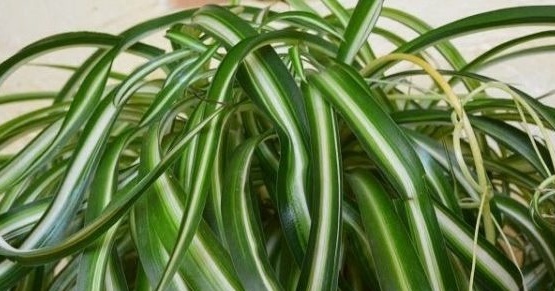 You may be interested in:
You may be interested in:Common Growing Questions
The spruce in question is a unique representative of conifers and deserves special attention. Even if it seems at first glance that caring for araucaria is difficult, it should be remembered that the efforts will be rewarded by the presence of this beautiful and useful plant in the house.




 10 beautiful annuals that bloom all summer
10 beautiful annuals that bloom all summer Sow in the ground, without seedlings: 10 beautiful and unpretentious flowers
Sow in the ground, without seedlings: 10 beautiful and unpretentious flowers Platicodon planting and outdoor care
Platicodon planting and outdoor care Hosta - planting and care in the open ground in the Urals
Hosta - planting and care in the open ground in the Urals